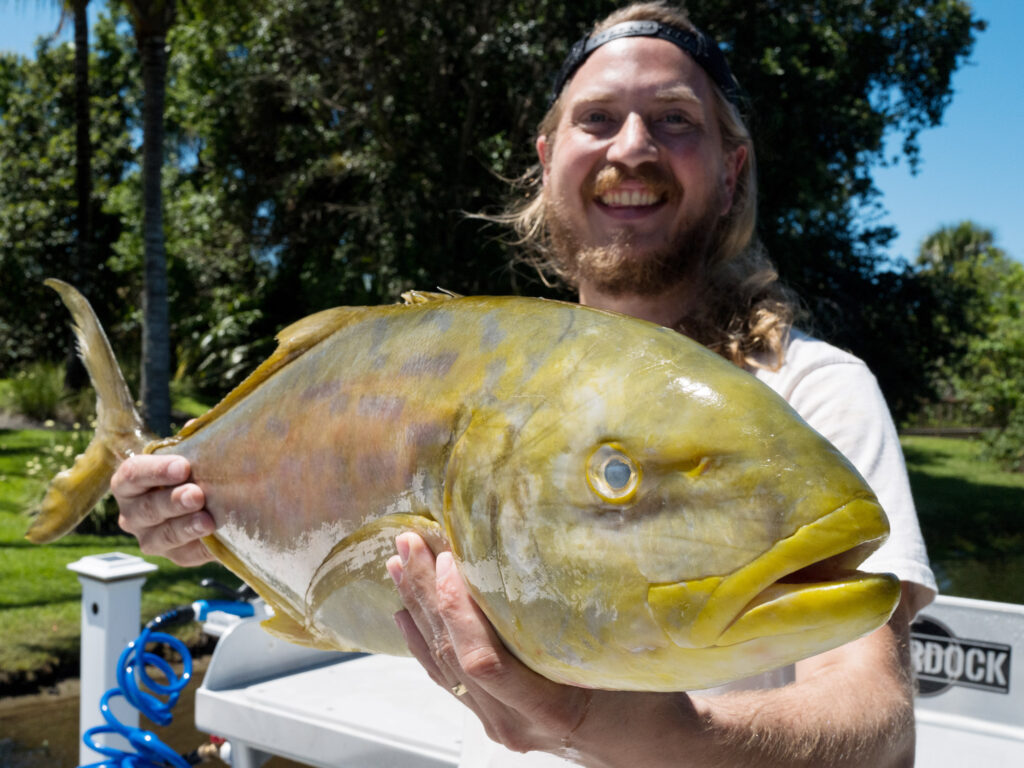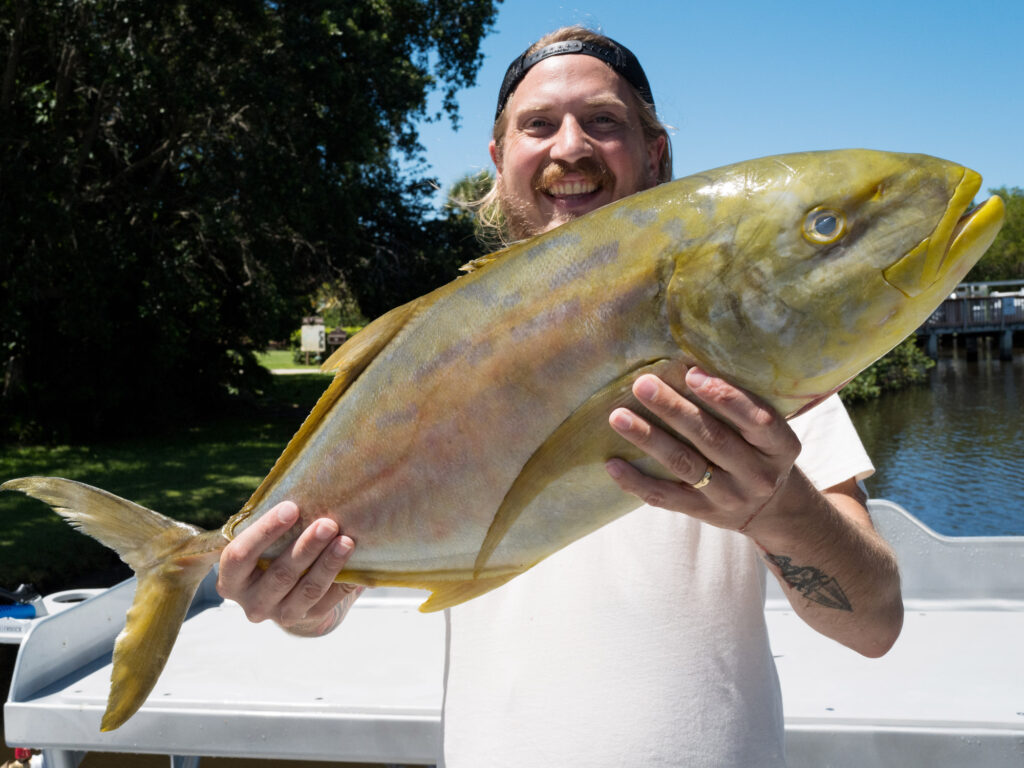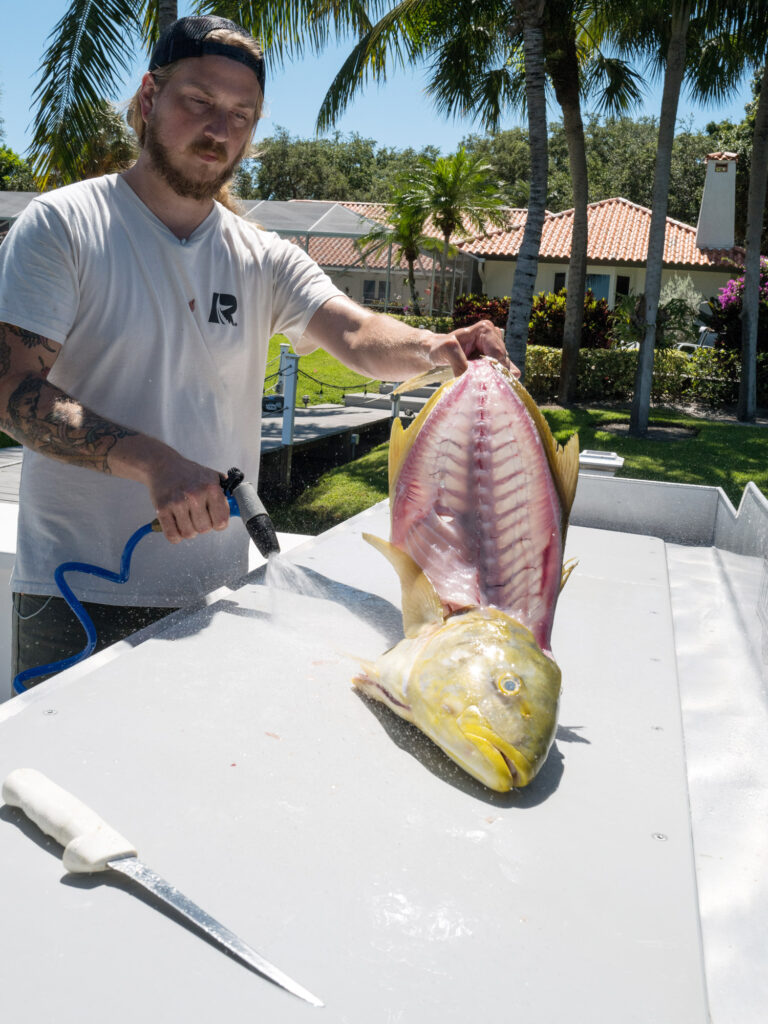How To Catch and Clean a Yellow Jack
 Yellow jack have gained a reputation as an excellent tasting member of the jack family.
Courtesy Reed Brand
Yellow jack have gained a reputation as an excellent tasting member of the jack family.
Courtesy Reed Brand
If you’ve ever dined at a sushi restaurant, you’ve likely encountered Hamachi, Kanpachi, or Hiramasa on the menu. What you may not realize is these are all members of the jack family. Jacks in the South Atlantic and Gulf of Mexico have historically held a lower market value due to lack of demand. However, in recent years, one of these jacks, the yellow jack, is gaining a reputation for quality rivaling its highly prized sushi relatives like the Pacific yellowtail.
Over the last five years, the wholesale value of yellow jack in Florida has surged from $1.50 per pound to $4 per pound—a staggering 165 percent increase. This price hike is largely driven by the yellow jack’s newfound association with its esteemed cousins in the sushi world. The fish’s texture and flavor have earned it a nickname: Florida Hamachi.
 With its streamlined body and silvery yellow color, yellow jacks are easy to distinguish from other jacks.
Courtesy Reed Brand
Yellow Jack Identification
With its streamlined body and silvery yellow color, yellow jacks are easy to distinguish from other jacks.
Courtesy Reed Brand
Yellow Jack Identification
Yellowjack (Carangoides bartholomaei) is easy to distinguish from other jacks thanks to its streamlined, oval-shaped body and a silvery yellow hue, especially on its flanks. The yellow tint extends to its fins, which gives it a distinctive appearance. Yellow jacks typically grow to about 12 to 24 inches, although larger specimens over 30 inches are occasionally caught.
Fishing Tips and Locations for Yellow JacksYellow jack thrive in tropical and subtropical waters, especially around reefs, wrecks and rocky outcrops in the South Atlantic, the Gulf of Mexico and the Caribbean.
Trolling or bottom fishing with live bait, such as pilchards, sardines or pinfish, are effective methods for targeting them. Anglers also report success using artificial lures and jigs when fishing for yellow jack near reefs and other underwater structures.
Yellow Jack DietYellow jacks primarily feed on small fish, crustaceans and squid, which gives their meat a mild flavor and firm texture and makes them ideal for raw preparations like sashimi or sushi. They are also excellent grilled or seared.
 With flavor and texture similar to the prized Pacific jacks often served as sashimi, it is worthwhile to get every bit of meat off a yellow jack.
Courtesy Reed Brand
Safety Considerations for Raw Consumption of Fish
With flavor and texture similar to the prized Pacific jacks often served as sashimi, it is worthwhile to get every bit of meat off a yellow jack.
Courtesy Reed Brand
Safety Considerations for Raw Consumption of Fish
According to FDA guidelines, fish intended for raw consumption should be frozen to kill any parasites. Their recommendation is to freeze your fish at -4°F (-20°C) for 7 days, or at -31°F (-35°C) until solid, followed by 15 hours at the same temperature to ensure safety.
Maximizing Your Yield: Filleting YellowjackIf you’re fortunate enough to reel in one of these sought-after fish, you’ll want to maximize your catch. Here’s how to make sure you get every last morsel of meat:
- Begin by lifting the pectoral fin and cutting at an angle just behind the head, making sure to capture all that forehead meat.
- Next, use the tip of your knife to make a small incision along the back of the fish. With the opening made, let the skeleton guide your knife as you begin filleting, ensuring you don’t miss any of the prized yellow jack meat.
- As you approach the center spine, use the tip of your knife to carefully separate the connection between the pin bones and ribs. This will allow you to lift the fillet cleanly without tearing it.
- Then, use the tip of your knife along the top of the center spine to position the blade on the opposite side, working your way toward the edge. Lastly, rest the knife on the exposed rib bones and gently scrape along them until the fillet is free.
When skinning and deboning yellow jack, I prefer to separate the high loin from the low loin. Start by taking your fillet knife and wedging it to the left of the pin bone line, then run it down the length of the fish, cutting all the way through the skin.
Next, repeat the process on the right side of the pin bone line, removing the pin bones while simultaneously separating the two loins. Skinning these two pieces is much easier than trying to skin the whole fillet. See the video for a visual guide to these steps and tips on how to remove the collars.
The post How To Catch and Clean a Yellow Jack appeared first on Salt Water Sportsman.
- Home
- About Us
- Write For Us / Submit Content
- Advertising And Affiliates
- Feeds And Syndication
- Contact Us
- Login
- Privacy
All Rights Reserved. Copyright , Central Coast Communications, Inc.